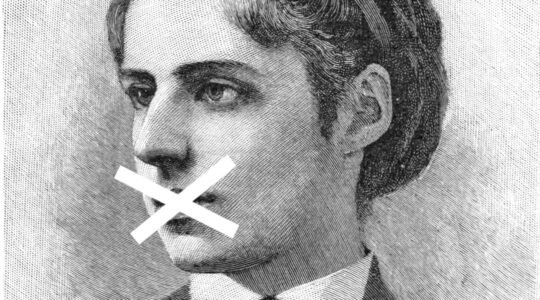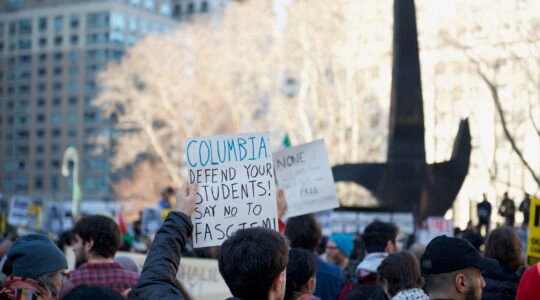A battle is raging to define Orthodoxy. There are calls for the liberal fringe, which some refer to as Open Orthodoxy, to be removed from the Orthodox Union. Some argue that it is intellectually dishonest to call the liberal fringe “Orthodox.”
I am only tangentially invested in this debate, since I prefer my affiliation with the Union for Traditional Judaism and am more concerned with following halachah [Jewish law] than with earning the label “Orthodox.” However, since for many “Orthodox” is synonymous with “authentic,” this struggle will have serious implications for the future of halachic Judaism. I believe the OU should define its standards of membership as broadly as possible. More importantly, everyone should accept the possibility that different interpretations of halachah can be equally authentically Orthodox, as can be demonstrated by reviewing several of the halachic flashpoints in Orthodoxy.
Open Orthodoxy is criticized for its standards of conversion. Rabbi Marc Angel demonstrates in “Choosing To Be Jewish” that many current “Orthodox” standards of conversion are evident only in halachic sources after the advent of Reform Judaism. The late Sephardic Chief Rabbi Hakham Benzion Uziel argued against some of the strict interpretations of conversion. Is following current practice more indicative of Orthodoxy than consistency with Talmudic sources?
The Talmud rules against women receiving aliyot based on the “honor of the congregation,” which calls Open Orthodoxy’s Partnership Minyanim into question. (Partnership services have men and women separated by a mechitza but allows women to lead certain parts of the service.) However, the Talmud demonstrates that certain forms of honor are waivable and it is not clear that Talmudic standards of etiquette are immutable. Many Talmudic standards of etiquette are arguably ignored in Orthodoxy, for instance, rolling a sefer Torah to Maftir (compare Talmud tractate Yoma 70a) and boys unable to grow a beard serving as shaliach tsibur, leading the service (compare Talmud Tractate Chulin 24b). While one may debate the applicability of these precedents to Partnership Minyanim, it is hard to say that any approach is THE Orthodox approach.
Open Orthodoxy embraces female clergy, predicated on certain limitations that importantly differentiate it from Conservative movement’s fully egalitarian model. The OU responsum against female clergy concentrates on sociological arguments while providing no classical sources (with the possible exception of a variant text of Sifri Devarim 17:15, though what roles are prohibited by that text can be debated). The responsum notes that Proverbs 3:17, stating, “Deracheha darchei noam (its paths are paths of pleasantness)” is a factor in halachic decision making, an argument that can just as easily be cited in favor of female clergy. Why is the approach that seeks to expand women’s roles in Judaism within the limits of halachah less Orthodox than the approach that seeks to slow those developments?
Open Orthodoxy argues that modern ideals that amplify Torah values should inform halachah. Its detractors make equally sociological arguments. The OU responsum declares, “the Torah community’s historical and widespread observance of a particular practice establishes a default position for halachic decision-making.” Concern for unprecedented ritual inspired by modernity is worthy of halachic consideration. However, in light of the Mishnah’s ruling (Eduyot 2:2) that lack of precedent is not halachically decisive, the OU’s default position can hardly be described as the only valid approach.
The liberal fringe’s detractors often argue that certain rabbis are empowered to define the limits of Orthodoxy. However, rabbis who confirm the status quo are most likely to earn such stature, thus leading to an Orthodoxy defined by its penchant for maintaining the status quo. Further, such centralization of power, unprecedented since the Sanhedrin, can hardly be considered the only possible manner of Orthodox decision making.
I am generally supportive of Open Orthodoxy. Nonetheless, as an expatriate of the Conservative movement, I share some of the concerns of Open Orthodoxy’s detractors that it could lose halachic containment. I believe that K’lal Yisrael is best served by an OU that includes Open Orthodoxy. Orthodoxy as a whole should appreciate that Open Orthodoxy has broadened the Orthodox imagination, even if not everyone can embrace everything Open Orthodoxy imagines. There can be little argument that many of the positive developments regarding women in Orthodoxy- developments cheered on by the OU responsum against women clergy – were a result of prior challenges to the status quo. Further, an Orthodoxy that encompasses Open Orthodoxy will be in the best position to help it maintain its commitment to halachah.
If the OU chooses to excise its most liberal wing, each side should have the humility, intellectual honesty, and civility to recognize that its group does not have exclusive rights to the moniker “Orthodox.”
Rabbi Gradofsky is a vice president of the Union for Traditional Judaism and a member of the board of directors of Lechu Neranena, the Partnership Minyan of Bala Cynwyd, PA. The opinions expressed here are his own.
The New York Jewish Week brings you the stories behind the headlines, keeping you connected to Jewish life in New York. Help sustain the reporting you trust by donating today.




